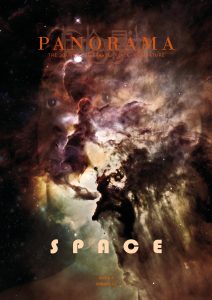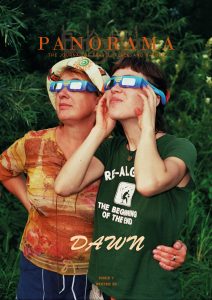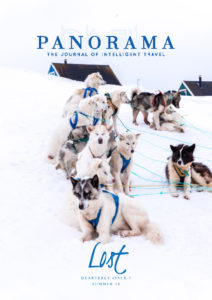I am looking for Joe.
It is early morning and the hot winds fragranced with the aromas of sun baked earth and prairie grass blow through the car. Ahead the interstate is straight and flat for as far as I can see. On both sides of the interstate the prairie and ranch lands are contained within barbed wire fences that, like the interstate, stretch endlessly. There are few buildings along this stretch, no homes or barns. The only exits have signs to places that I imagine no one turns off to go to unless they live there.
Coming from Sioux Falls, South Dakota I stop in Mitchell because The Corn Palace is there. A building decorated with corn is something that Joe would make a detour to see.
I drive slowly down Mitchell’s Main Street, hoping to see Joe hanging around the palace, trying to not get lost in the spectacle of an Arabian-type palace complete with a dome and cylindrical pointed minarets decorated with murals of South Dakota landmarks and famous Americans made from painted corn. After an hour of circling around the palace and not seeing any sign of Joe, I pull over. A young woman with long blonde hair and pink cheeks is putting a poster in the window of one of the front doors.
“You can go in sir, we opened at eight,” she says looking over her shoulder at me.
I take the picture of Joe out of my pocket and hold it up for her to see. “Have you seen this man?”
She stares at it for a moment then says, “No, I’m afraid not.”
I get back on the interstate and head west.
Five miles down I pull over to pick up a hitchhiker walking in the tall grass with his thumb sticking out. He is wearing a white cowboy hat and is carrying a small back pack over one shoulder. He runs up to my car and leans into the passenger side window.
“You going to Rapid City?” He asks.
“I’m not sure yet. I’m looking for someone. I can give you a ride for as far as I go,” I say.
He looks eastward, the direction he was coming from, then west. There isn’t much traffic. He then looks up at the vastness of the clear blue sky and the sun rising in it. “I guess that will do,” he says as he gets in the car. “Tom Hawk Wing,” he says closing the door then shaking my hand. He takes his hat off and places it in his lap on top of his backpack as we pull back onto the interstate.
He is older than he looked from a distance. His light brown skin is ruddy from sun and weather, the cheeks lined with deep wrinkles. His black hair is long and braided into a pony tail in the back. He is wearing yellow shirt with an embroidered green cactus design above both pockets. His jeans are covered in dust as are his brown boots.
“Are you a cowboy?” I ask after a few minutes.
His laugh is brief and seemingly self-conscious. “I live on the reservation,” Tom says as if that answers the question.
“The reservation?” I ask.
“Pine Ridge. There’s not much to do there. I was visiting a friend in Sioux Falls and now I am going home.” He puts his face out the window, inhaling deeply, then pulls his face in. “The air is dry. It has been hot this summer, even hotter than usual,” he says. “There is no place on the reservation to get cool.”
“I’m originally from New York and know very little about Native Americans,” I tell him. “What is your tribe?”
“I’m Lakota Sioux,” he says. After a while he asks me whom I’m looking for.
I pull the picture out of my shirt pocket and show it to him. “Him, his name is Joe. It is important I find him. I’m pretty certain he is travelling west and he likes to sightsee and stop at tourist spots.”
“It will not be easy finding him,” Tom says. “There is a lot to see along this route.”
“I have every place he might stop marked in a guidebook,” I say. “With luck, eventually I will catch up with him.”
“With luck,” Tom says.
Outside a Conoco Gas Station at the turnoff to the 1880 Town, Tom gets out of the car and closes the door. He leans in through the window to thank me, then straightens himself and looks up at the sky, puts his backpack over his shoulder and his cowboy hat on and begins walking alongside the interstate. He sticks his thumb out.
At the door to the Casey Tibbs Museum in 1880 Town, I show Joe’s picture to an elderly man, also in attire much like Toms only without the dust, selling admission tickets into the museum and town.
“Has he been here?” I ask.
The man looks at the picture for several minutes, staring at the photo front and back, scratches his face with long boney fingers and says, “He doesn’t look familiar but I don’t really look at the faces of folks coming in.”
I buy a ticket anyway and go into the museum which is like entering someone’s very tidy and organised attic of relics from the old west days. Anything and everything I have ever seen in a movie western is either in display cases, hung on the walls or atop old wooden barrels. One section of the museum is of course devoted to Casey Tibbs. From reading what is posted on the walls or in the display cases, I learn that Tibbs was a nine time world champion rodeo cowboy. Joe would have found this kind of trivia fascinating, but Joe is nowhere in sight.
In the town itself, there are a collection of buildings that look to be authentically old-west, including a hotel and a saloon, but built and assembled as tourist attractions. The streets and grounds are dry dirt and the grass is short, unlike the prairie land that surrounds it. I show Joe’s picture to several people dressed in old west clothing, which really doesn’t look that much different than modern western garb, but none of them recognise him. I bypass the artefacts from the movie Dances With Wolves, shot on location in the area as I leave the town. Joe didn’t like the movie.
When I get back on the interstate, Tom Hawk Wing is nowhere in sight.
The drive from the 1880 Town to Wall is much like the stretch of interstate leaving Mitchell headed west, except that the closer I get to Wall I can see the faint outlines of the rock formations and hills along the eastern end of the Badlands. Entering Wall, or more specifically driving into Main Street of Wall, is like entering a shopping mall parking lot that is several streets long. Cars are parked at an angle side by side along both sides of the street as well as on both sides of a median. The reason that Wall exists at all I suspect is because of the block or more long Wall Drug, a brown wooden structure that is a mix of the old west like 1880 Town and modern day theme park. The walkway along the entire Wall Drug storefront is bustling with people, but still it is surprisingly quiet; there are no car horns being blown at each other by angry drivers and the pedestrians on both sides of the street seem as polite to one another as parishioners going to church services on a Sunday morning. I later learn this all started over ice water being given away free to bring in weary and thirsty drivers who might buy other things and support a flailing Wall pharmacy back in 1931.
I find a parking spot right in front of Wall Drug as soon as a car pulls out and away. I sit in the car watching people coming in and out of the doors, hoping to see Joe. Finally, mustering up the courage to leave my car to mix with the crowd, I roll up the windows and get out.
I am swept into Wall Drug by the throng like a surfer riding a wave. It takes several minutes for my eyes to adjust from coming in out of the bright light of noon day sun into the relatively dim light inside. I catch glimpses of life size old west type amusement park type statues sitting on a bench on the left and of a store sign on the right with wearable leather goods of all types displayed in a window. Physically urged along by the tourists all around me, I shuffle with the rest of them through doors at the left and am immediately deposited in aisles and aisles of souvenirs and trinkets, everything from Badlands snow globes to Indian drums made of plastic and imitation leather. Once inside the confined space, the multitude of voices is suddenly deafening. I escape into a room leading to the restaurant within Wall Drug.
“Yes he was here,” the teenage cashier say as I show her Joe’s picture.
“Are you certain?” I ask, as I pay in advance for the food that will be delivered to my table.
“I never forget an accent, even among these crowds” she says proudly. “His was Irish I think.”
“That’s right, he’s from Dublin originally. When was he here?”
“Couldn’t say for certain, maybe earlier this morning, but it wasn’t long ago. He said something about camping in the Badlands tonight.”
Waiting at my table I look around at the paintings hanging on the walls, some of which are extraordinarily good, but all of western themes: buffalo being hunted, soldiers fighting with Indians, women in long dresses and bonnets, and covered wagons on the open plains. My food arrives quickly and I nearly swallow the buffalo burger whole, gulp down the soda then bite into what I can swear is the best maple icing covered plain cake donut to be found anywhere in the United States. For all the times I have cursed Joe’s name for running off without repaying his debt to me, biting into the sweet maple icing and thick cake of that donut somehow almost makes it all worth it.
I leave Wall Drug with a dozen donuts in a bag in one hand and a small inexpensive pup tent and sleeping bag under one arm. I head for the Badlands in search of Joe.
The Park Ranger standing in the door of a small ranger’s booth recognises Joe from the picture.
“Is he in some sort of trouble?” The ranger asks.
“Not really trouble,” I say. “Nothing that can’t be solved simply by just finding him.”
“I think he said he was going to camp at the Sage Creek campground. Just take the first road to the right and keep going. You will see the signs. There will be people pulled over and out of their cars to get a look at the prairie dog town on the way,” he says, then waves me on.
The rock formations as I enter the park are like a multicoloured layer cake; grey, beige, pink, and light purple are stacked on top of each other. If Joe is at the campground I will find him later, so I drive forward and down the winding road bordered on both sides by the weather-worn scraggly hills of solid rock. The air coming in through the window feels warmer then the air felt traveling on the open interstate. I can feel the grit of microscopic size bits of ancient rock and dust on my tongue. The aroma of the open prairie is replaced by the scent of earth, mud and rock. I drive slowly through a good deal of the park, seeing two bald eagles flying overhead and a small herd of scruffy mountain goats atop a hill, before I turn back and finally turn off onto the road and head to the campground.
I am slowed by cars parked on each side of a stretch of road, and just as the ranger said the occupants of the cars are standing alongside them watching the small brown prairie dogs darting in and out of their holes or standing on their hind legs barking their distinctive high pitched chatter. I continue on through the winding road past open fields of lush prairie grass and small trees that stand alone and far apart from one another in the fields. More than once I see buffalo in the distance in groups of three or four grazing peacefully together away from the annoyances of humans. Meadowlark song rings out in one spot, followed by an answering song from further away. I cross a small bridge that spans a mostly dry rock creek bed. A flock of small black birds swoop up from under the bridge, fly over my car and descend again on the other side and return to beneath the bridge, repeating this aerobatic dance until I am over the bridge.
At a sign to Sage Creek Campgrounds I pull into a circular lot with cars parked all around its perimeter and tents raised in the fields nearby or along a ridge overlooking the creek bed. I drive around twice before I spot him. Joe is sitting alone on a log. There is a pup tent like the one I purchased in Wall erected near him. The sun is setting and the sky is ablaze in hues of red and gold as I park my car and walk through the brown grass carrying a bottle of water to where Joe is sitting.
“You’ve led me on quite a chase,” I say to him. “You didn’t really think I would let you run off with without paying me back, did you?”
He looks up at me, a smile crossing his tanned face. “You know I like nothing better than going on a good lark.”
I shake my head. “I just didn’t expect you to do it on my dime.”
“If I had gotten all the way to the Black Hills and Mt. Rushmore you would never have found me.”
“I would have chased you all the way back to Dublin.” I sit down on the log next to him and open the bottle and take a swig then offer him the bottle which he accepts. “Your Irish accent tripped you up.”
“An Irish accent in South Dakota would give anyone away,” he says with a chuckle.
“All I want is my money,” I say. “I won it this time.”
“Sure,” he says. “Can I give it to you in the morning?” he asks, pointing to the vista before us.
“I’m not going anywhere until you do,” I say.
Morning and there are the sounds of large feet in the dirt outside my small tent. I look out and several buffalo are milling about, pulling up blades of grass and kicking at the dirt. Up close they look like standing piles of dirty brown carpets with massive sized heads of matted dark fur and horns. In fear of alarming them I remain quiet on my sleeping bag, watching them until they move on. I crawl out of my bag and look over. Joe and his tent are gone. I laugh, hoodwinked again. I’ve played this game for a decade now with my grandson. So long as he keeps coming home to see me, I’ll keep hunting him down. Maybe one day I’ll actually win that old dollar back.











